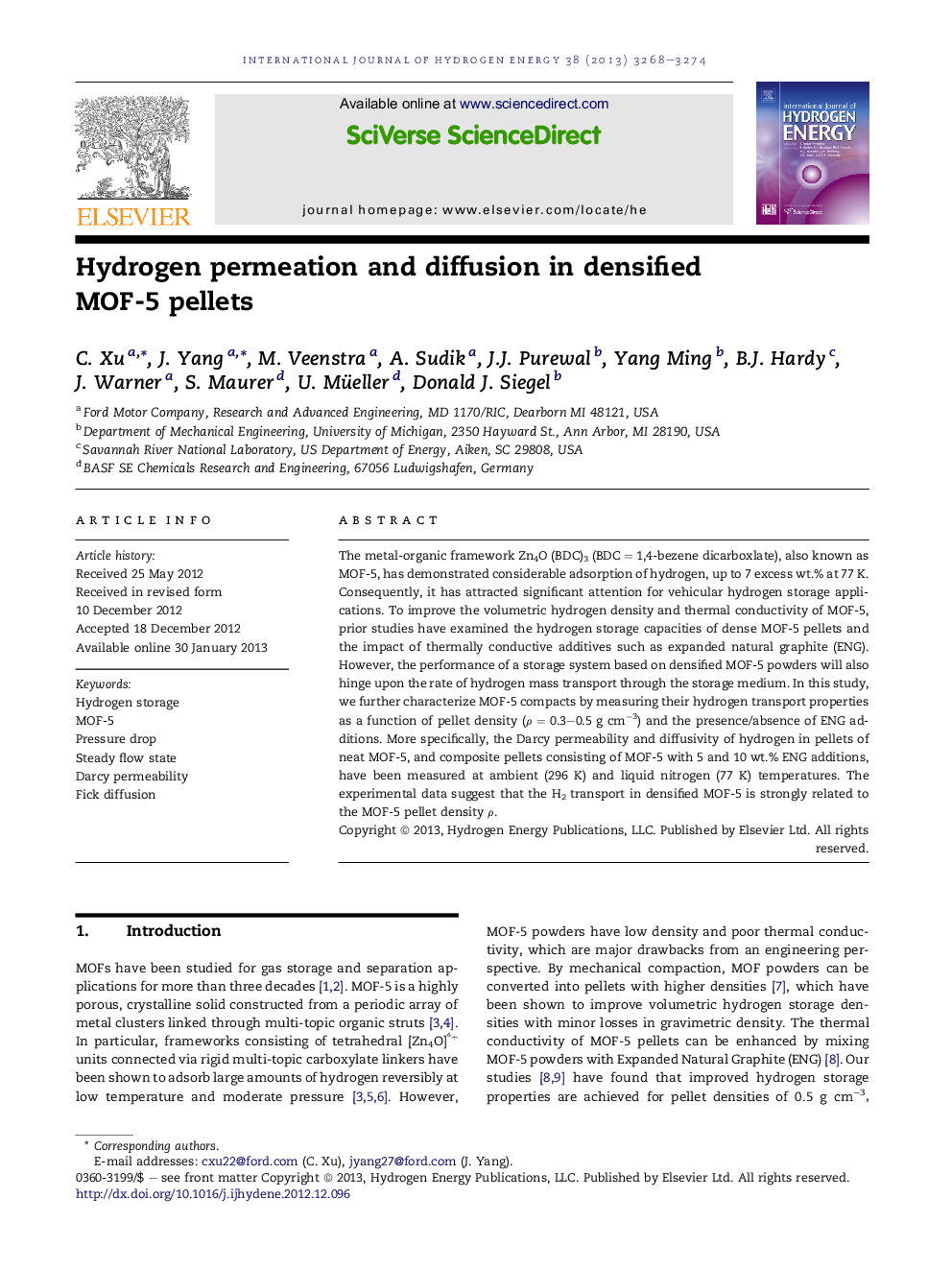| Article ID | Journal | Published Year | Pages | File Type |
|---|---|---|---|---|
| 1275742 | International Journal of Hydrogen Energy | 2013 | 7 Pages |
The metal-organic framework Zn4O (BDC)3 (BDC = 1,4-bezene dicarboxlate), also known as MOF-5, has demonstrated considerable adsorption of hydrogen, up to 7 excess wt.% at 77 K. Consequently, it has attracted significant attention for vehicular hydrogen storage applications. To improve the volumetric hydrogen density and thermal conductivity of MOF-5, prior studies have examined the hydrogen storage capacities of dense MOF-5 pellets and the impact of thermally conductive additives such as expanded natural graphite (ENG). However, the performance of a storage system based on densified MOF-5 powders will also hinge upon the rate of hydrogen mass transport through the storage medium. In this study, we further characterize MOF-5 compacts by measuring their hydrogen transport properties as a function of pellet density (ρ = 0.3–0.5 g cm−3) and the presence/absence of ENG additions. More specifically, the Darcy permeability and diffusivity of hydrogen in pellets of neat MOF-5, and composite pellets consisting of MOF-5 with 5 and 10 wt.% ENG additions, have been measured at ambient (296 K) and liquid nitrogen (77 K) temperatures. The experimental data suggest that the H2 transport in densified MOF-5 is strongly related to the MOF-5 pellet density ρ.
► MOF-5 has demonstrated adsorption of hydrogen, up to 7 excess wt.% at 77 K. ► H2 transport properties of MOF-5 are affected by pellet density and ENG addition. ► H2 transport properties in pellets of MOF-5 w/o ENG characterized at 296 and 77 K. ► Experiments suggest H2 transport in densified MOF-5 is related to pellet density.
